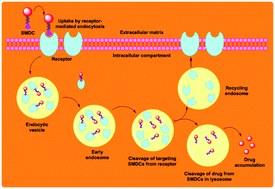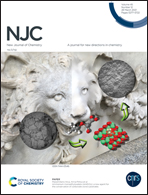Small molecule drug conjugates (SMDCs): an emerging strategy for anticancer drug design and discovery
Abstract
Traditional chemotherapy mostly relies on the use of cytotoxic agents, which are typically unable to preferentially localize at the tumor microenvironment resulting in off-target toxicity and dose escalation to therapeutically active regimens. In oncology, selectivity improvement is always challenging for researchers, to decrease off-target toxicity in conventional cancer chemotherapy because of the close similarity between cancer cells and normal cells. Small molecule drug conjugates (SMDCs), a promising approach for targeted therapy, allow small molecules as the targeted ligand to release a potent cytotoxic agent selectively in the tumor microenvironment to enhance the therapeutic potential of anticancer drugs. The SMDCs were designed using a similar concept to that of antibody drug conjugates (ADCs) but their non-immunogenic nature, lower molecular weight and manageable synthesis make them highly effective for tumor cell penetration and they are found to be advantageous over ADCs. A SMDC product 177Lu-DOTATATE is already in the clinic and several others are in clinical trials. In this perspective, we have extensively focused on the different aspects of SMDC design, i.e., targeting ligand, linker, spacer, cleavable bridge and therapeutic payloads. In addition, the types of SMDCs, their possible mechanism of action, application in the clinic and a few other SMDCs under clinical development against different cancers are highlighted.

- This article is part of the themed collection: 2021 Focus and Perspective articles


 Please wait while we load your content...
Please wait while we load your content...